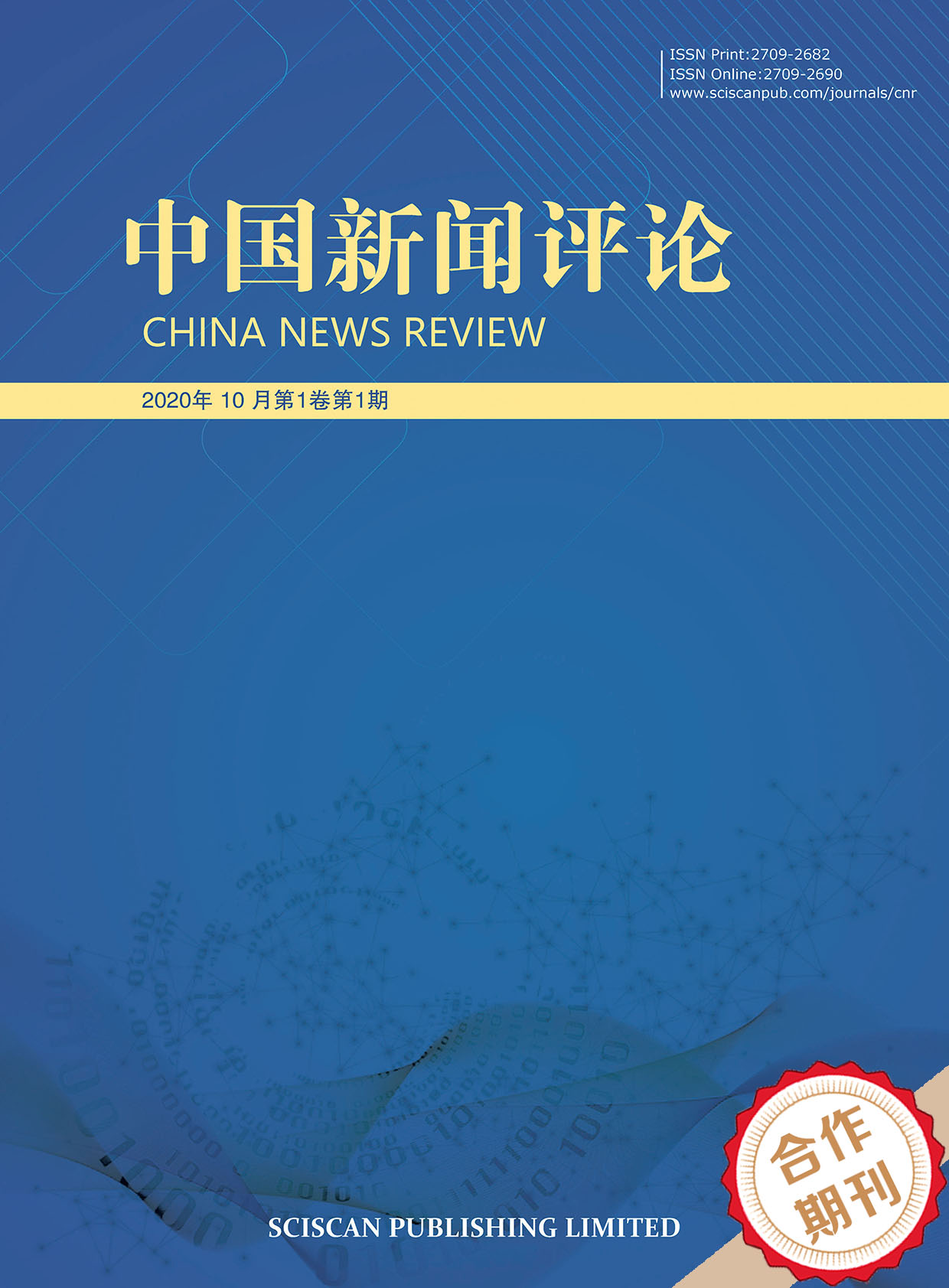China News Review
ISSN Print: 2709-2682
ISSN Online: 2709-2690
Contact Editorial Office
Subscribe to the latest published information from SCISCAN
中国老年传播研究的现状、热点与趋势 ——基于CiteSpace 的可视化图谱分析(2012—2022)
Elderly communication; Elderly media; Digital inclusion; Media empowerment; CiteSpace
- Authors: 范龙 李宇帆
-
Information:
中南财经政法大学,武汉
-
Keywords:
Elderly communication; Elderly media; Digital inclusion; Media empowerment; CiteSpace老年传播; 老年媒介; 数字融入; 媒介赋权; CiteSpace
- Abstract: Using CiteSpace software to visualize and analyze 981 related documents on elderlycommunication research in the China Knowledge Network Database (CNKI) from 2012 to 2022, it isfound that the research hotspots are focused on the topics of elderly broadcasting, WeChat, Jitterbug,digital divide, media image, silver-haired Netflix, and health communication; the ten-year researchhistory can be roughly divided into three phases: stable development period (2012—2015), paradigmadjustment period (2016—2018), and comprehensive development period (2019—2022), with studiescentered on elderly audiences, WeChat, and self-presentation playing a key role between the phases;meanwhile The core group of authors in the field has not yet been formed, and there is a lack ofinfluential academic guiding forces. Based on the findings of this paper, the future media perspectiveshift, the expansion of the perspective of media empowerment, the promotion of theoretical innovationand the adaptation of research methods to aging may be the future direction of the study of elderlycommunication in China. 利用CiteSpace软件对2012—2022年中国知网数据库(CNKI)中老年传播研究的981篇相关文献进行可视化分析,发现研究热点集中于老年广播、微信、抖音、数字鸿沟、媒介形象、银发网红、健康传播等话题;十年的研究历程大致可分为平稳发展期(2012—2015)、范式调整期(2016—2018)、全面发展期(2019—2022)三个阶段,围绕老年受众、微信、自我呈现展开的研究在阶段间扮演了关键角色;同时领域内核心作者群尚未形成,缺乏有影响力的学术引导力量。基于本文的研究发现,未来媒介的视角转向、媒介赋权的角度拓展、推进理论创新和研究方法适老化可能是国内老年传播研究的今后方向。
- DOI: https://doi.org/10.35534/cnr.0501004
- Cite: 范龙,李宇帆.中国老年传播研究的现状、热点与趋势——基于CiteSpace的可视化图谱分析(2012—2022)[J].中国新闻评论,2024,5(1):43-55.
















